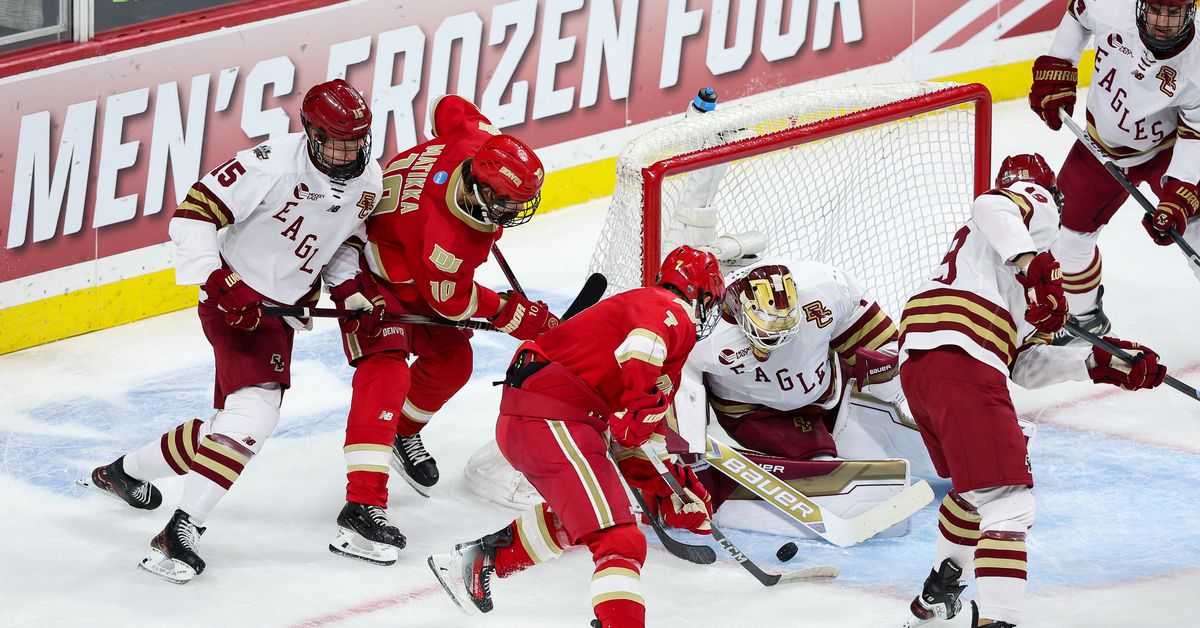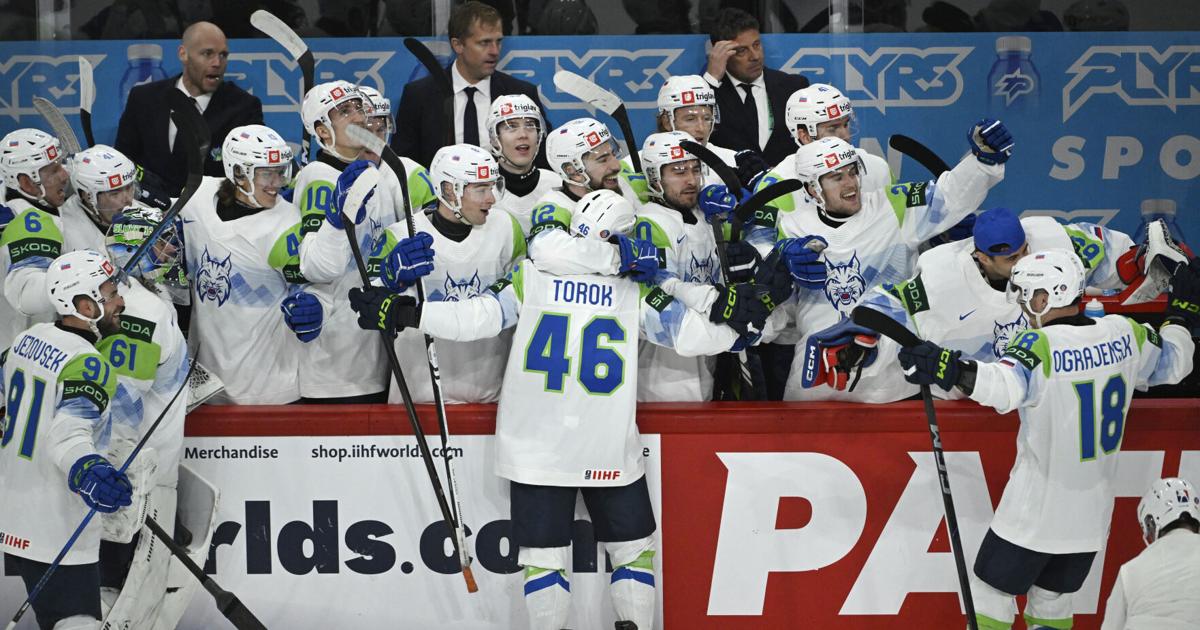There have been rumors swirling for a little while now that the NCAA might be moving away from its sometimes-appreciated, sometimes-loathed, always-misunderstood hockey tournament selection criteria, the Pairwise Rankings. Those rumors came to a head on Tuesday afternoon as one of college hockey’s most respected reporters put the scuttlebutt to print (or at least to screen):
There was initially some confusion as to whether the NPI would be replacing the Pairwise entirely, or just replacing the RPI in the Pairwise calculation like the women do, but we checked with a couple sources and it does appear that, if approved, the Pairwise would indeed be replaced entirely with the NPI in both men’s and women’s D-I hockey.
That got some people on Twitter searching for a more in-depth explanation to how the math works. And as a site that likes to stay on top of the nuances of college hockey rankings and indeed has run an NPI calculator for women’s hockey since their tweak to the Pairwise in the 2022-2023 season, we’re happy to oblige.
What is NPI?
It stands for “NCAA Percentage Index.” Some sites call it “NCAA Power Index,” but that seems to be unofficial and/or not the accurate name.
The first time we saw NPI mentioned was back in 2020 after the women’s hockey summer meetings. The oversimplified way to describe it is a love child of RPI and KRACH:
-
RPI uses a weighted combination of winning percentage (25%) and strength of schedule (75%). Strength of schedule is the complicated part here: It’s split into Opponents’ Winning Percentage (24%) and Opponents’ Opponents’ Winning Percentage (51%). That is — take a sum of the winning percentages of all your opponents, divide it by the number of games played, then do the same with the opponents’ winning percentage of your opponents, and weight those numbers accordingly. Don’t forget that you have to take out your opponents’ games against you from the calculation!
…Yeah, it’s messy. It’s certainly doable with a spreadsheet, but it’s unnecessarily mucky and the ratios feel pretty arbitrary.
-
KRACH is run entirely differently — first off, it’s recursive, which means you need to know everyone’s ratings in order to determine everyone else’s ratings. It’s defined such that if you take this formula: (Team A’s Rating) / ( Team A’s Rating + Team B’s Rating ), what you’ve done is calculated Team A’s odds of beating Team B. If you do that for every opponent, sum up the odds of Team A beating all of its opponents, and divide that number by how many games they played… then like magic, that equals the exact number of games Team A actually won (which will be true for every team in the rankings).
Officially, this is BCI’s Most Favorite Perfect Ranking System, partially because of its mathematical beauty with no arbitrary weights involved… but we think coaches are afraid of math. Sorry coaches; we said what we said.
-
NPI sprinkles in some aspects of both RPI and KRACH. It takes the familiar ratio of 25% winning percentage to 75% strength of schedule (though they could tweak this ratio; it’s been changed before), but the strength of schedule is defined as just “your opponent’s NPI rating,” making it a recursive calculation. Despite that recursiveness, it makes the math a lot cleaner.
Let’s say you won a game against a team with an NPI of 0.700. The strength of schedule factor for that game is just 0.700 — you don’t have to go through the nonsense of calculating all that team’s opponents’ records and their opponents’ opponents’ records. Your NPI for that game would simply be ( 1.000 x 25% ) + (0.700 x 75%) = 0.775. Do that simple calculation for every game you played and take the average, and there’s your team’s NPI rating.
But wait…how does that work if you need to know everyone’s NPI in order to calculate everyone’s NPI?
Easy: Just assume everyone has a rating of 0.500, run the calculation once, and everyone will get a new rating. Run the calculation again using those new ratings, and they’ll change again. Do that a couple hundred times, and eventually everyone’s ratings converge to numbers that stop changing meaningfully after each run. Those convergent numbers are your NPIs.
What about records against common opponents and head-to-head results?
These are just comparison points in the Pairwise Rankings and would no longer be used. The way the Pairwise worked was that each team would be compared against each other team one at a time, and you’d see who got the most number of points using this formula:
-Higher NPI got 1 point (and was the tiebreaker)
-Better record against common opponents got 1 point
-Each head to head win was worth 1 point
So, if Team A was 2-0 (2 points) against Team B, but Team B had a higher NPI (1 point) and a better record against common opponents (1 point), Team B would “win the comparison” 2-2 (with NPI being the tiebreaker) and get one “Comparison Point.” You’d compare Team A against every team and see how many Comparison Points they got, then do the same with Team B against everyone, and so on, and then you’d rank teams based on who won the most Comparisons against the most teams.
In practice, 99% of the time this would just result in a ranking identical to NPI, since most teams don’t play each other. The only way you could beat a team in a comparison while having a worse NPI was to have a better head to head record against them *and* have a better record against common opponents, or, have a whopping 3 head to head wins against that team and no losses. Since most teams don’t even play each other head to head, this rarely resulted in any real change to the rankings — which is why most people are fine with nixing these from the system entirely. It just complicated things without actually adding much benefit.
What about the “Quality Win Bonus”?
In women’s hockey, this didn’t go away, it was just calculated a little differently from the RPI days. Instead of a bonus based on the ranking of your opponent, you got a bonus based on the rating of your opponent. In women’s hockey, you get a quality win bonus if your opponent’s NPI was above 0.515. The higher your opponent’s NPI is above 0.515, the greater your quality win bonus.
I would expect this to stick around in men’s hockey with a similar calculation.
Home/Away Split?
Women’s hockey doesn’t use a home/away split in its NPI, but assuming it’s kept as a factor for men’s hockey, the home/away split calculation would presumably not need to change at all. When taking an average of each game’s NPI, each game would be given a higher or lower weight in the weighted average based on if you won or lost the game at home or on the road (80% for a home win or road loss, 120% for a road win or home loss). Mathematically, there would be no need to change this when moving from RPI to NPI.
Overtime/Shootout Results?
Same thing, there should be no real changes to this part (though they could tweak it if they want to). A game going to a shootout counts as a tie (50% of a win). An overtime win counts as 67% of a win, and an overtime loss counts as 33% of a win.
Does all this mean we can finally stop “removing bad wins”?
Lol. Lmao, even.
No. This is one of the biggest gripes people have with RPI, but no, this wouldn’t go away with a switch to NPI. It’s just as likely that a really good team beating a really bad one will see a drop in their NPI, and that game has to be ignored. Not only that, but women’s hockey started removing good losses the last couple seasons too, for when a really bad team loses to a really good team but still sees an increase in their rating. So now we have two band-aids on the same problem. Yay!
Who Does This Help?
A switch to NPI would have seen the Big 10 & Hockey East schools (the two top conferences in college hockey this season) drop a bit on average this year had NPI been in use, while the bottom conferences saw an average rise.
That makes some sense — this is oversimplifying things a little, but if you’re changing the basis for your SOS calculation from winning percentages (a stat with a huge range between the top and the bottom; this year in women’s hockey winning percentages ranged from 0.939 to 0.148) to NPI (in women’s hockey the range was 0.691 to 0.395), then you can see how consistently playing top teams won’t boost your SOS quite as much under NPI (and that playing bottom teams will).
But honestly, anyone with strong feelings that a swap to NPI will help or hurt the teams that play a better or worse strength of schedule is probably overthinking things. There’s a good bit of evidence that the Pairwise and NPI both undervalue teams from top conferences, and that KRACH does a better job than either of them at evaluating results against both top competition and weak competition. But we’re not moving to KRACH anytime soon, so you’re really splitting hairs comparing two imperfect systems.
Yeah, sorry; we love KRACH here at BCI.
Hopefully you enjoyed this deep dive into the numbers. The main takeaway here is that there isn’t a huge difference between what you’d get if you move from the Pairwise to NPI, so making the rankings easier to understand is a step in the right direction that I think both the coaches and fans would welcome.
It will never stop the annual complaints about certain teams getting in over others, but we wouldn’t want to lose that entirely, would we?






















































